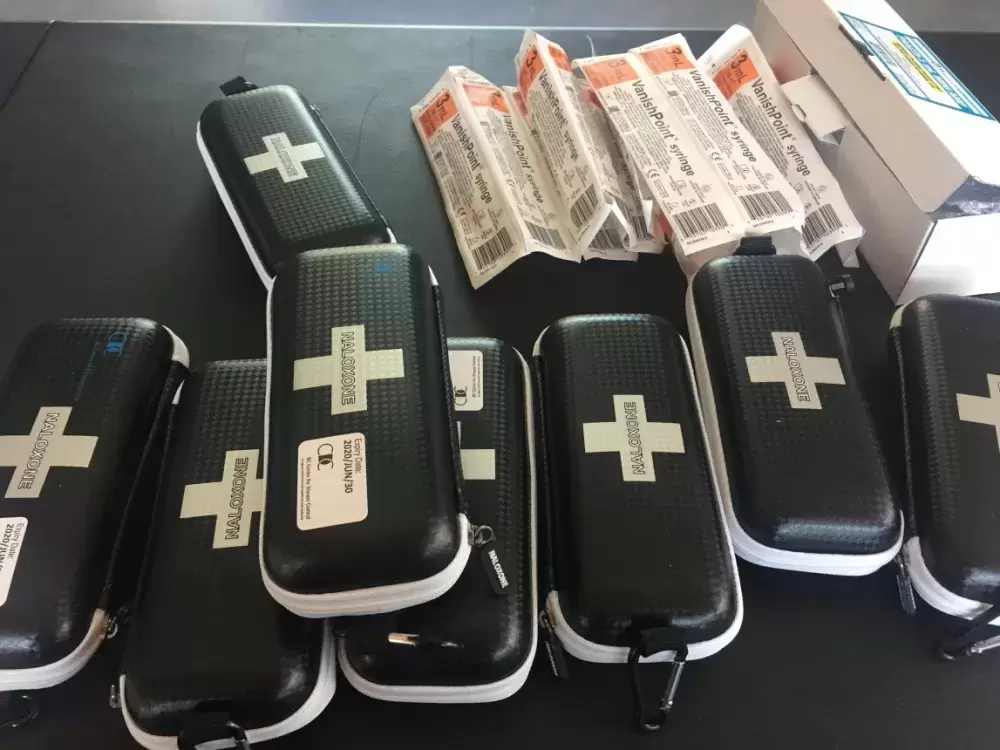The Ministry of Mental Health and Addictions has announced that twenty B.C. communities will receive up to $100,000 in one-time grants from the new Community Overdose Crisis Innovation Fund.
According to a provincial media release the twenty communities selected to receive the first round of funding are ones that are harder hit by the overdose crisis and where local Community Action Teams (CAT) have been established.
Five Vancouver Island communities will receive first-round grants: Campbell River, Duncan, Nanaimo, Port Alberni and Victoria.
The funding is part of the province’s $322 million investment to address the overdose crisis. It came following the 2016 declaration of a public health emergency by provincial health officer Dr. Perry Kendall. The declaration was made under the Public Health Act due to the significant rise in opioid-related overdose deaths reported in B.C. since the beginning of 2016.
In December 2017, the province launched the Overdose Emergency Response Centre. The centre is working provincially, regionally and locally to mobilize resources within communities to intervene quickly to save lives. The initiative aims to deliver proactive treatment and support on the ground to identify and help people at risk from overdose.
The Port Alberni CAT team is represented by 37 members from service organizations operating not only in the city, but also the surrounding areas in the Alberni Clayoquot Regional District. The organizations involved include the Port Alberni Shelter Society, the Canadian Mental Health Association, the Nuu-chah-nulth Tribal Council, First Nations health Authority, Alberni Drug & Alcohol Prevention, the Port Alberni Friendship Center and others.
“These service groups meet regularly, once or twice a month to look at what we can do to curb the opioid crisis in the valley,” said PASS (Port Alberni Shelter Society) Executive Director, Wes Hewitt.
He went to say that members of the Port Alberni CAT applied for the funding so that they could expand the hours of the Overdose Prevention Site (OPS) located at 3699 3rd Avenue.
“We received just under $100,000 in funding and we will use it to expand the hours and the safe consumptions site,” said Hewitt.
In addition, they will be hiring a coordinator for outreach work in the community who will be involved in harm reduction and education. The coordinator would also facilitate public education about substance addictions and prevention at events and public gatherings.
“We hope to remove some of the stigma involved with addictions and the opioid crisis,” said Hewitt.
The new funding will allow the OPS to increase distribution of and training in the use of Naloxone kits.
There’s been an extremely good uptake in Naloxone training and distribution; this is part of what this site (OPS) does,” said Hewitt.
There is also a need for more peer workers at the OPS.
“We have twelve peer workers at the site but we need six more,” said Hewitt.
Peer workers, according to Hewitt, help clients get what they need in the way of harm reduction supplies, groceries, clothing, coffee and refreshments. They work out of the OPS office space.
“They also watch over clients that are using on site in case they were to overdose; they go around the neighbourhood to make sure our streets are clean of garbage from our site and they do in-house cleaning,” Hewitt added.
Dr. Paul Hasselback, Island Health Medical Office, delivered a report to the Port Alberni CAT on July 6. He said that the overdose fatality rate in 2018 for the Alberni-Clayoquot Regional District has not decreased compared to last year and continues to be elevated compared to provincial and island rates.
“There have been 25 fatalities in the region since January 1, 2016,” said Hasselback in an email to Ha-Shilth-Sa.
He went to say that the male to female ratio in fatalities is 4:1 and age ranges are fairly evenly spread in the 20-65 age groups.
“Most fatalities have occurred in a private residence with 88 per cent having fentanyl detected (this means that fentanyl had been used and was found at investigation, however does not necessarily mean fentanyl contributed to the death),” wrote Hasselback.
The BC Ambulance Service is responding to one to three overdoses per week.
Hewitt says the Port Alberni CAT is looking for more First Nations involvement at the table.
“We’ve reached out the NTC and others. Why? Because the opioid crisis affects everyone in the valley,” he added.
“We are working with community partners and we are seeing some success, but we still have a long way to go,” said Hewitt.







